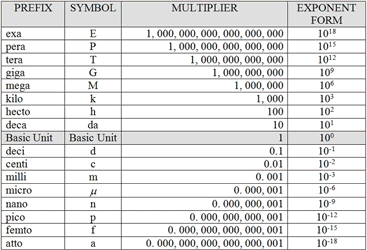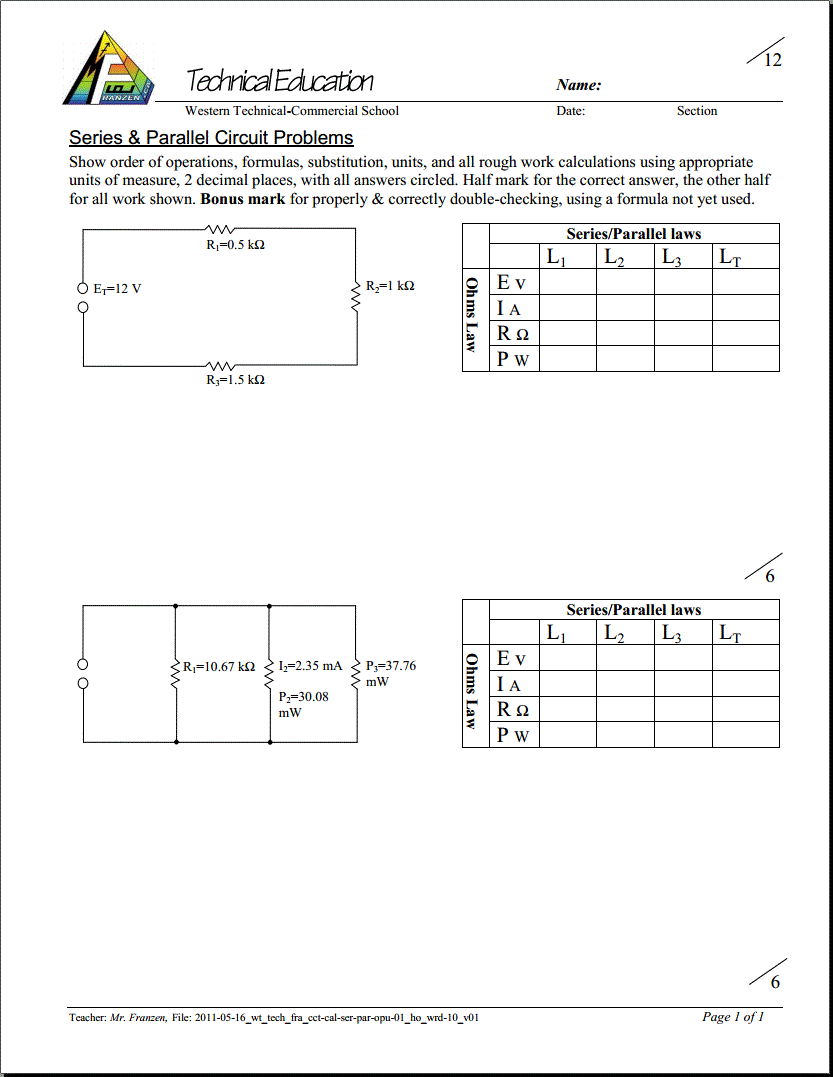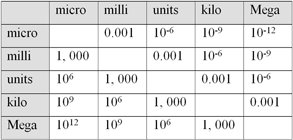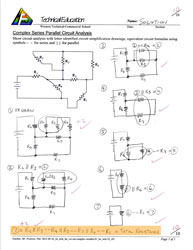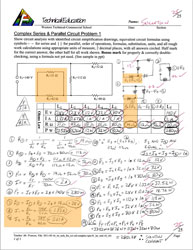Unit 1: Computer Technology: Robotics and Control Systems
Welcome to the Robotics and Control Systems course which has a focus towards robotics, controls, sensors, working with computers, programming, electronics, logic circuits, and troubleshooting.

You will notice each unit activity below is broken down into five subtopics, SPICE, to guide and help you through the project and assignments related to the unit activity:
- Situation - This is the introduction, big picture, or you can think of it as the setting of story/novel
- Problem/Challenge - What must be resolved or completed, i.e. what you will need to accomplish
- Investigation/Ideas - includes gathering ideas, research and organizing information to help create, construct, and/or complete the Problem/Challenge
- Create/Construct - take your best idea and complete and/or build the needed solution
- Evaluation - did the Problem/Challenge above get resolved and/or completed
This unit will introduce you to the course, our routines, safety, expectations, computers, and troubleshooting.
Unit Content Activity Quick Links, Click to Jump to Specific Activity!
- Unit 1, Act. 1: Safety, Organization, and Course Information
- Unit 1, Act. 2: Electricity and Circuits
 Unit 1, Act. 1: Safety, Organization, and Course Information
Unit 1, Act. 1: Safety, Organization, and Course Information 
Situation:
A class of students starting a computer technology/robotics course here at school.
Problem/Challenge:
Getting familiar with what the course is all about, class routines, expectations of the course and the teacher, general administration of class, and safety are all important issues to know and understand, so that the learning process can begin.
Investigation/Ideas:
The following is list related to this course and should be reviewed by students:

- Course Details
- General Safety
- Detailed Safety Issues
- Shop/room Layout
- Shop/room Resources
- Emergency Procedures
- Expectations
- Evaluation
- Class Policies
- Routines
- Attendance and Lates
- Moodle Log-in
It is important that students feel comfortable with the above points and should know what is happening in the course.
Create/Construct:
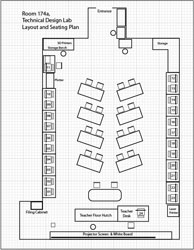 Start by organizing your supplies and materials for taking and storing your notes. review the course outline and class routine, write down any questions you have about the course, requirements, or responsibilities you need to be clear on.
Start by organizing your supplies and materials for taking and storing your notes. review the course outline and class routine, write down any questions you have about the course, requirements, or responsibilities you need to be clear on.
The following list of links are details that students are to review, after going over them in class:
- Robotics and Control System Course Outline
- Introduction to Technical Classes
- General Safety Presentation
- General Safety Contract
- Course Achievement Breakdown
- Evaluation and Tips Breakdown
- Moodle Log-in
USB Memory Stick, Cloud, Folders and Shortcuts
One of the first things in class we do is review the Tech Info page, point number 2 above. The top section with 10 blanks is to be filled in with the important things we will cover in this course. You will find this information by reviewing the course outline and listening to the teacher discussing what is happening in the course. The bottom section will also need to filled out with two in class peers for contact information and support with in the class to help foster teamwork and responsibility.
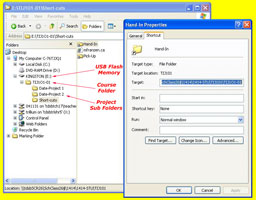
Next you will need to get a USB memory stick, for saving your work on to. You may also use a cloud resource, but USB is highly recommended. You will need to create two shortcuts inside a main folder with your course code, and a sub-folder called Shortcut Links.:
- Moodle Log-in
- mfranzen web
You will also need to create more folders for future projects/topics, to keep your digital work organized. The intent is to work off of your USB in school and save to your computer drive when you are finished at the end of class as a back-up. This way you can take your work with you and work elsewhere if needed and it is backed up somewhere else.
File Naming Conventions, Digital Organization and Shortcuts
In-conjunction with the above assignment, to ensure that each student has the following:
- registered with moodle properly
- understands how to access course related assignments
- can hand in an assignment through the moodle server
- actually has folders organized
- has a usb (preferred) or cloud storage solution
...so that students know how future digital assignment processes go. To accomplish this Digitally Ready assignment follow these steps:

- First review the moodle log-in info page, then go to the moodle log-in for the first time and register yourself in the system
- Take a look at the first assignment description and copy the text, similar to the picture here to the right
- Save the text to a txt document with the proper file naming convention
- You need to type your name in, then go to each of your web shortcuts, right click and select properties, then copy the shortcut link address and paste it into the text file in the required location
- You will also need to show folder locations for main course folder and sub folder names that you have created for the course, to show you are organized from the start
- Go to the Tech info page on the site and open up the PDF file and copy the section that explains file naming conventions, i.e. how to properly name files you hand in (just above the shortcut instructions)
- Make sure your file is named according the the section you just copied into your text file, then submit the assignment txt file in moodle.
Make sure all work you submit is saved first on your USB, then drag and drop onto moodle's submit button or click the submit and locate your finished txt file to hand in.
Evaluation:
Although these are not heavily weighted, they are important project assignments that will benefit you throughout the rest of this course
| Evaluation Breakdown Component Descriptions | Marks |
|---|---|
| Always double check that you have completed all components for full marks. | |
| Survey - Answer all 7 questions fully | 7 |
| Course Outline Signed - Take home to show your parents and get signed by parent | 5 |
| Tech Info - Filled out with 10 course components, and two peer contacts | 10 |
| General Safety - Class reviewed, read through and sign, parent signature also | 5 |
| Digitally Ready- Shortcuts, main folder, and sub folder organization, & file naming convention | 10 |
| What Did you Learn - Test your knowledge here: | |
| Moodle Quiz - Based on above work covered, log-in here, help with quiz access/process | 10 |
| Total Marks | 62 |
 Unit 1, Act. 2: Electricity and Circuits
Unit 1, Act. 2: Electricity and Circuits
Situation:
Computers and robots have one thing in common, circuits. Circuits are what drive all of our technology. More importantly electricity is what runs on those circuits making everything work. This is a very simple concept to understand, but in order to work with this kind of technology, such as troubleshooting a circuit problem, a closer look at circuits and how electricity interacts is important to know and understand. Because electricity can not be seen, and is dangerous to come in contact with, using measuring tools tools and some theory, we can diagnose and understand what is happening in a circuit.
![]() This will allow you to not only understand, design, and build circuits, but also troubleshoot and fix circuits problems.
This will allow you to not only understand, design, and build circuits, but also troubleshoot and fix circuits problems.
Problem/Challenge:
Review the characteristics of electricity and how it flows in circuits (Circuit Theory Presentation). Specifically electron flow, ohm's law , and power in series, parallel and complex ccts. Complete two worksheets on the series and parallel samples, series/parallel with units of measure, complex variable circuit, and a complex cct calculation showing all formulas, steps, and answers.
Investigation/Ideas:
Presentation
Before starting on these circuits we will need to review ![]() Circuit Theory in the following areas:
Circuit Theory in the following areas:
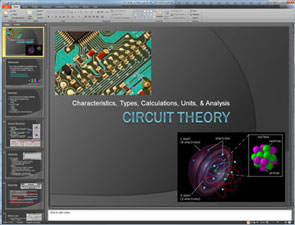 Atomic structure of related materials
Atomic structure of related materials- Electricity and electron flow
- Ohms law
- Power
- Circuit Types
- Series
- Parallel
- Combination/complex
- Quantities and units of measure

Resource Links
All About Circuits site is an excellent site to learn all about electrical related information. It has e-book sections, worksheets, videos, and a forum. We will be referring to this site for several future project related tasks. Currently you will find all that is in the above presentation, in more detail here on this site.
Create/Construct:
For the following two types of circuits, you will need to apply ohms law and power formulas to find the circuit unknowns.
Series and Parallel Sample Circuits
- Start with the Series Intro sheet handout and copy the calculation answer format down with pencil to familiarize yourself with the format and review of how to calculate circuit unknowns. The image to the left can be enlarged to see it up close. Pay close attention to the steps and how the circuit was completed. Note all work must be shown when doing these calculations to get full marks, as fifty percent of the mark goes towards showing the process i.e. your steps in how you calculated your answers.
- Continue with the Parallel Intro Sample sheet handout similar to the above sheet showing all work as in the sample. The key to this is showing your all of your steps, units, and order of operation for all calculations. These two samples are very easy, so you may focus on the process of these circuit calculations.
Series and Parallel Circuit Calculations with Units of Measure
It is very rare that electrical circuits have easy numbers to work with. In fact a lot of time in electronics, some numbers you work with will be either be very big or very small and that is where units of measure come in. As reviewed in the above Circuit Theory Power Point presentation, and the next handouts includes this, so you will need to apply ![]() Units of Measure rules when numbers are either really big or small.
Units of Measure rules when numbers are either really big or small.
![]() Remember, when working with different units of measure, that those numbers in a formula calculation must be all the same when making those calculations.
Remember, when working with different units of measure, that those numbers in a formula calculation must be all the same when making those calculations.
Find all the unknowns in the following handout as seen above: ![]() Series, Parallel, and Units of Measure Circuit Problem Handout 3 following the same sample process that was shown earlier and the units of measure support charts given:
Series, Parallel, and Units of Measure Circuit Problem Handout 3 following the same sample process that was shown earlier and the units of measure support charts given:
Complex Series/Parallel Circuit Analysis and Calculations
- Referring to the above Circuit Theory Power Point presentation, you can follow the complex circuit breakdown analysis. For the sample to the left, note how the circuit drawing is simplified each step from a to e. These steps are explained in detail here if you wish to review it one more time. Your first assignment
 Complex Series/Parallel Analysis Variable will be to analyze and simplify the circuit without calculations. Simplify and redraw the circuit however many times you need to get a final complex statement using letter variables
Complex Series/Parallel Analysis Variable will be to analyze and simplify the circuit without calculations. Simplify and redraw the circuit however many times you need to get a final complex statement using letter variables - Your next assignment
 Complex Series/Parallel Analysis and Calculations you will do the same except this time actually calculate all the unknowns using calculations, circuit diagram simplification and circuit analysis.
Complex Series/Parallel Analysis and Calculations you will do the same except this time actually calculate all the unknowns using calculations, circuit diagram simplification and circuit analysis.
Evaluation:
Each circuit assignment problem must show all work, to get full marks and once taken up in class, 50% of the lost marks can be reclaimed that day, by showing the corrections completed on a separate area with a different coloured pen with a title above stating "Corrections @ 50%".

| Evaluation Breakdown Component Descriptions For Presentation | Marks |
|---|---|
| Always double check that you have completed all components for full marks. | |
| Series Intro Sample - copied neatly in pencil showing all formulas and calculations | 10 |
| Parallel Intro Sample - copied neatly in pencil showing all formulas and calculations | 10 |
| Series & Parallel Cct - order of operation, all formulas, units, and calculations | 12 |
| Complex Series/Parallel Analysis Variable -cct diagram simplification and final variable | 10 |
| Complex Series/Parallel Analysis and Cal.- diagram simplification and all unknowns | 25 |
| What Did you Learn - Test your knowledge here: | |
| Moodle Quiz - Based on above work covered, log-in here, help with quiz access/process | 10 |
| Total Marks | 47 |


